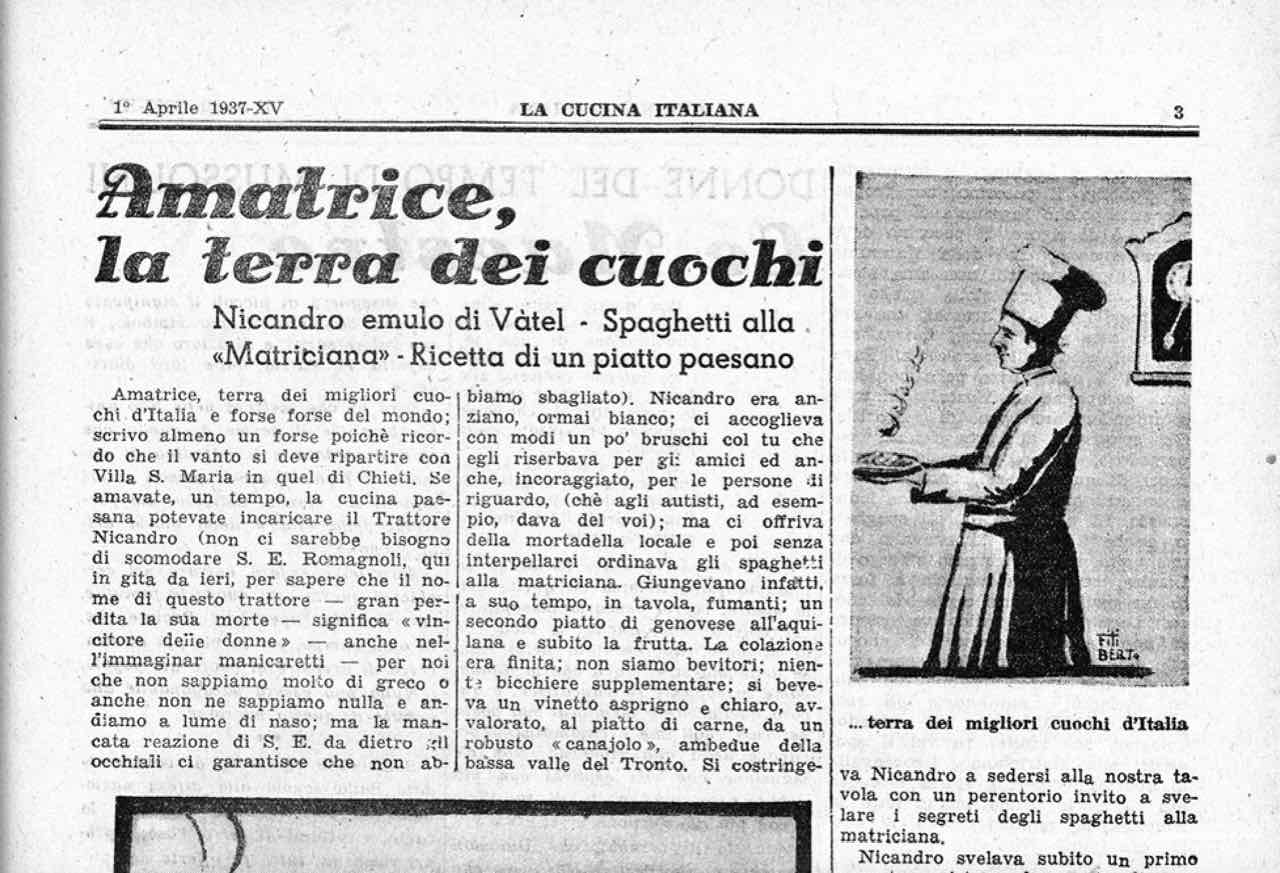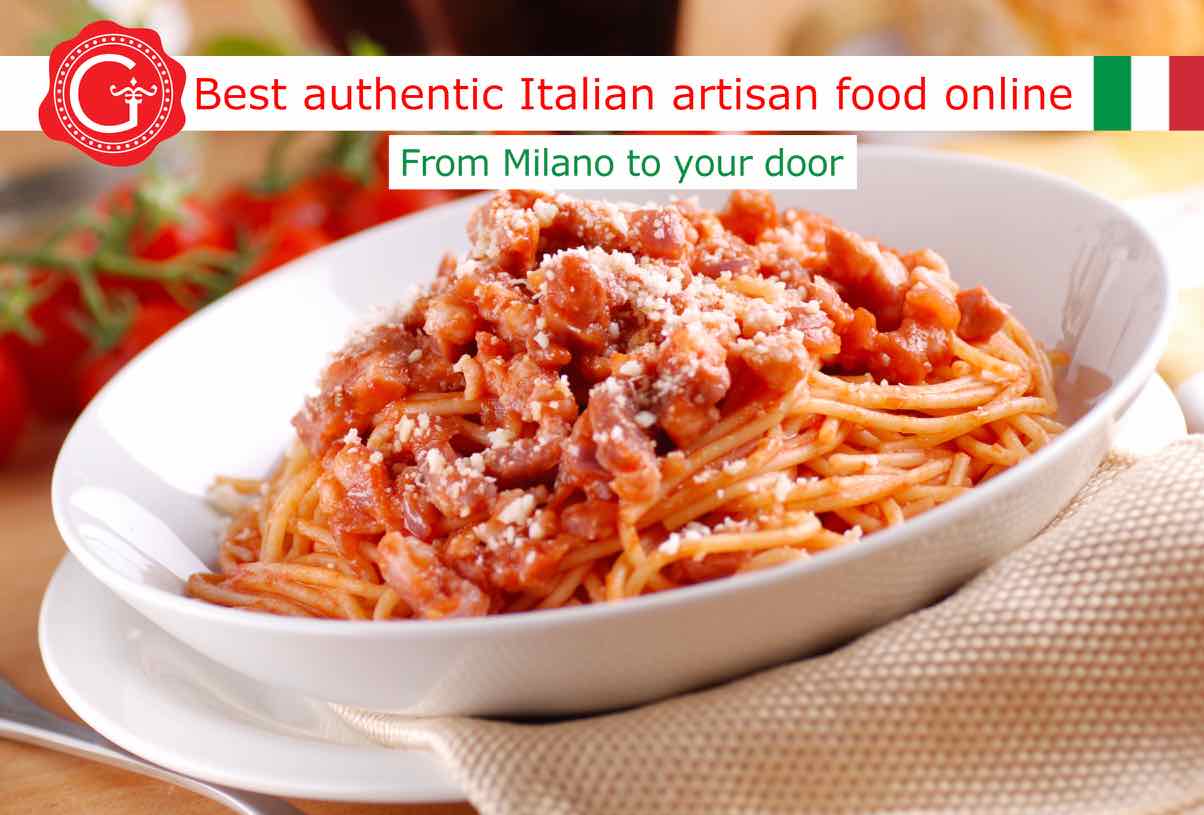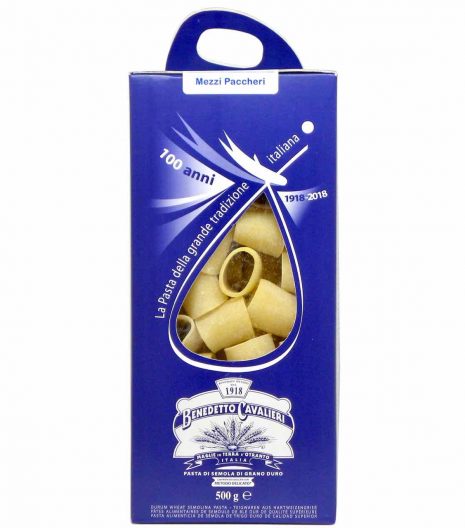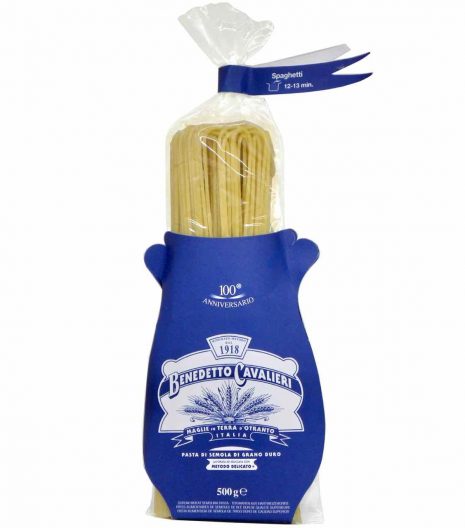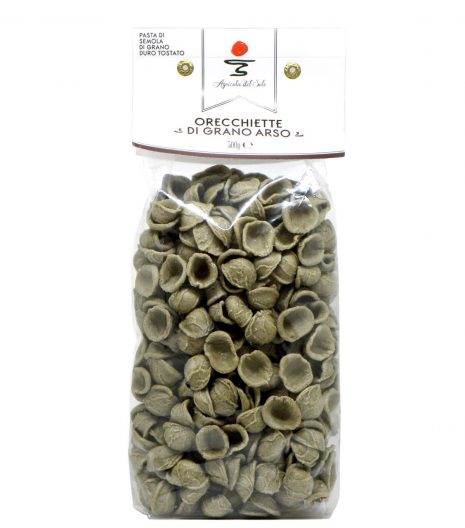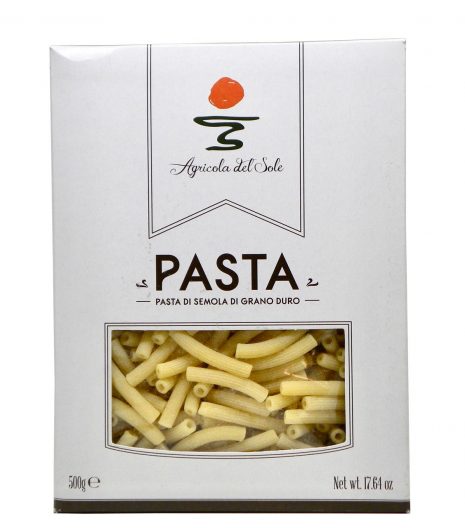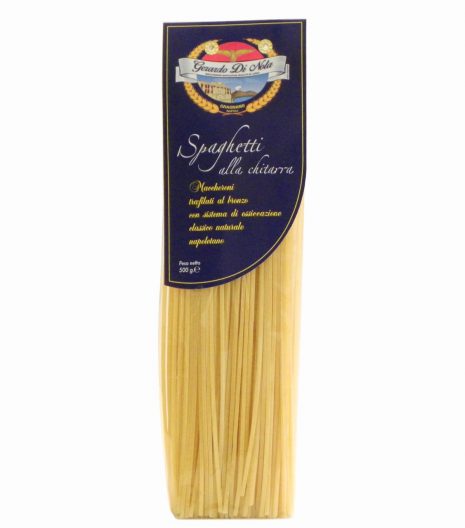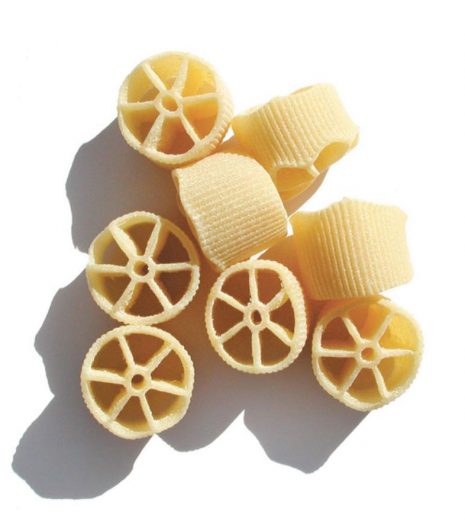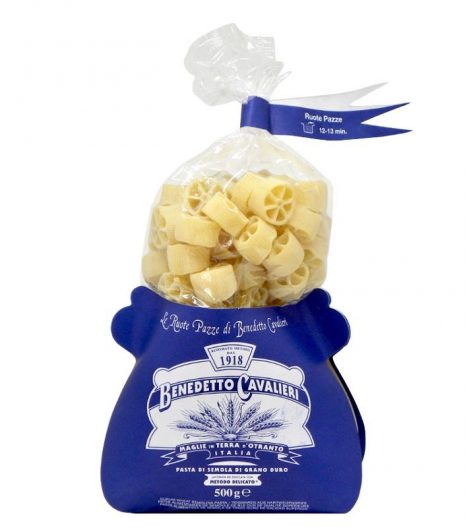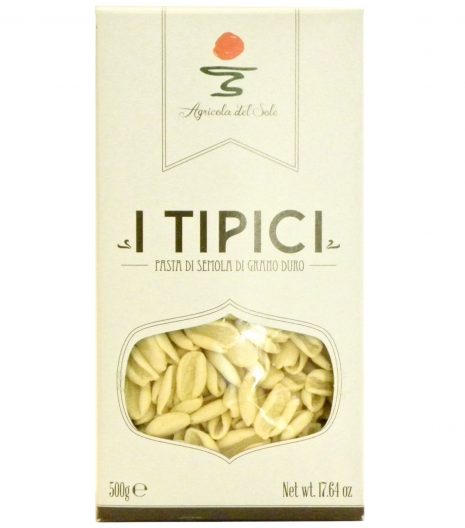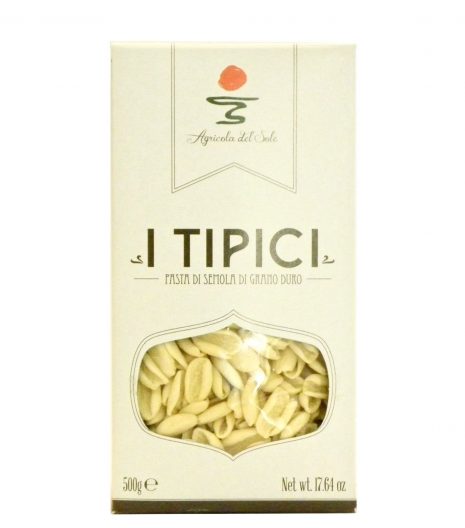Amatriciana sauce is a well-known Italian recipe. It is easy to find in restaurants spaghetti amatriciana, bucatini amatriciana or other pasta shapes seasoned with this sauce. And at home, with friends, pasta amatriciana is an exceptional dish.
In Italy we say salsa all’amatriciana, which translates to sauce in the manner of Amatrice or sauce in the manner it is cooked in the Amatrice area.
Over the years the recipe has partly changed: the recipe proposed by Ada Boni in her Il talismano della felicità (The Talisman of Happiness), for example, is different from the recipe given in the 2015 Amatriciana sauce production disciplinary.
Let’s see a version of the recipe that we believe is very tasty, hypotheses about the origin of the recipe and some changes of this tasty sauce over the years. Preparation time for pasta all’amatriciana is about 15 minutes; cooking time is about 20 minutes.
AMATRICIANA SAUCE INGREDIENTS FOR 4 PERSONS
Here are the ingredients of Gustorotondo for an amatriciana sauce to season 320 grams of pasta:
- Guanciale (Italian cured meat prepared from pork jowl or cheek, whose name is derived from guancia, that translatescheek) 120 g
- 6 San Marzano tomatoes or 350 grams of high-quality preserved peeled tomatoes
- Pecorino di Amatrice 150 g
- Salt to taste.
- Ground black pepper to taste
PREPARATION OF PASTA WITH AMATRICIANA SAUCE
- To prepare pasta with amatriciana sauce (pasta amatriciana or, as we say in Italy, pasta all’amatriciana), start by setting a pot of water on the stove.
- Take a large bowl, which will then contain all the ingredients. Grate the Pecorino di Amatrice.
- When the water boils, add coarse salt and toss the pasta.
- Remove the pork rind and cut the guanciale into strips. Brown them in a pan without oil, until they become slightly dark and crispy on the outside. They will release the fat: you can set it aside or eliminate it.
- Remove the guanciale and the fat from the pan and add the blanched tomatoes cut into strips or the preserved peeled tomatoes. Add a little salt, stir and cook for about 15 minutes over high heat.
- Add the strips of guanciale to the ingredients in the pan, possibly together with the fat released, and mix well.
- Put the sauce in the bowl together with the pecorino.
- Set aside a little cooking water, and drain the pasta al dente.
- Transfer the pasta to the pan and mix well. If the sauce appears too dry, add a little cooking water.
- Serve, and add a little freshly ground pepper to the dishes.

SOME TIPS OR FURTHER INFORMATIONS
- Normally Spaghetti or Bucatini are used for the pasta amatriciana recipe. Also Penne and Rigatoni or Mezzi Paccheri are good companions of the amatriciana sauce.
- Pay attention that the guanciale does not brown too much.
- To prepare the sauce you can use fresh or peeled, preserved San Marzano tomatoes. If you intend to use fresh San Marzano tomatoes, before adding them, boil them and cut them into fillets (perhaps eliminating the seeds).
- A portion of pasta amatriciana provides about 650 calories. The calories derive mainly from the guanciale, whose caloric intake is 655 kcal per 100 g
- The amatriciana sauce is included in the list of traditional agri-food products of the Lazio region (GU n. 141 dated 20/06/2014).
SHOP ONLINE THE BEST ARTISAN ITALIAN PASTA FOR YOUR AMATRICIANA
On Gustorotondo you find the best artisan Italian ingredients for your pasta with amatriciana sauce and other high-quality authentic Italian foods.
We look for producers who have high-quality standards, and we offer artisan Italian good products that enhance the tradition and authentic flavours of Italian cuisine.
Gustorotondo was born as a traditional Italian food store in the center of Milan, and then started the e-commerce business. Now you can buy traditional Italian food online on Gustorotondo from all over Italy, from England, from Germany, from the Netherlands, from the Czech Republic, and from all the other European countries.
Shop online the best authentic artisan Italian food at Gustorotondo!
AUTHENTIC AMATRICIANA RECIPE
According to the Production disciplinary for the Amatriciana sauce, the recipe originates on the Amatrician side of the Monti della Laga. According to the explanation, the local shepherds, during the transhumance period, which kept them away from home for 4 or 5 months, brought with them some products that could be stored for a long time, such as guanciale, pecorino and flour.
The disciplinary distinguishes between white amatriciana sauce, also known as Gricia, and red amatriciana sauce. Continuing, it indicates that the history of Amatriciana sauce is from Abruzzo until 1927, the year in which the boundaries between Lazio and Abruzzo changed. It also states that the introduction of the tomato in the recipe took place at the end of the eighteenth century, a period in which Amatrice was part of the Kingdom of Naples.
The recipe from Il Talismano della felicità by Ada Boni
The first Amatriciana recipe that has been published is perhaps that of Il talismano della felicità (The talisman of happiness) by Ada Boni. Here, amatriciana spaghetti are considered a typical dish of Roman cuisine despite their name. Tomatoes are peeled and cut into pieces, and the seeds are removed. The guanciale is chopped and sautéed with lard and onion. When the guanciale and onion are browned but not too much, the tomatoes are added. Tomatoes are cooked but not overdone. Ada Boni states that the traditional recipe requires pecorino and that, however, if a person does not like the spicy flavor of pecorino, he can use half pecorino and half Parmigiano, or just Parmigiano. The pepper, concludes the Boni, must dominate in this spaghetti.
Amatriciana sauce with pancetta and other variations
Some later recipes replaced the guanciale with pancetta, perhaps because the latter was more readily available. In L’art culinaire moderne by Henri-Paul Pellaprat, the chef who founded the Cordon Bleu school in 1895, the ingredients of the recipe for spaghetti with amatriciana for 6 people are: 500 g of spaghetti, 150 g of pancetta, 2 tablespoons of olive oil, 20 g of onion, 250 g of peeled tomatoes, pepper and salt to taste, 100 g of pecorino cheese (or Parmigiano mixed with pecorino cheese), 30-40 g of butter.
Since the early 1960s, however, pancetta is rarely considered an ingredient of amatriciana. According to some, pancetta gives the sauce an excessive flavor.
Furthermore, already in the 1930s someone had introduced the chili pepper instead of pepper.
Subsequent changes in the amatriciana sauce
During the period of the Italian economic boom, the ingredients of the amatriciana recipe tend to strongly stabilize on the following: guanciale from Amatrice, tomato, Pecorino Romano and chili pepper. Today in the recipe the onion tends not to be used.
In the Production disciplinary for the Amatriciana sauce, approved in 2015 and partially modified in 2016 from the Municipality of Amatrice, among the ingredients of the amatriciana sauce we find white wine, used to blend the guanciale. Furthermore, there is the possibility of using preserved peeled tomatoes instead of fresh tomatoes. Chili is considered optional, while pecorino, normally considered essential for the recipe, is indicated as a recommended pairing (the Disciplinary recommends adding plenty of Pecorino di Amatrice De.Co.).
The authentic amatriciana recipe, then?
So, which is the authentic amatriciana recipe, the original recipe of the dish that has then been named amatriciana? The original recipe of the shepherds probably wasn’t the recipe of Ada Boni, which also allows the use of Parmigiano. Was it very similar to that reported by the Production Regulations?
AMATRICIANA AND MATRICIANA
According to some, Amatriciana and Matriciana are different recipes. The first would be typical of Amatrice, while the second would be a typical Roman recipe. This distinction raises some doubts considering that, in a booklet of La Cucina Italiana of April 1937, an article entitled Amatrice, la terra dei cuochi (Amatrice, the land of cooks) tells of Nicandro, owner of a trattoria, of the fact that he ordered spaghetti matriciana and of the fact that he distinguished two types of spaghetti alla matriciana, one with tomato and one without.
A few years earlier, on 1 April 1917, we find the name matriciana mentioned together with the caloric intake for a portion (837 kcal).
An hypothesis is that the name matriciana is the result of an apheresis: the name of the recipe, which is correctly written Amatriciana, is pronounced as if the first ‘a’ of Amatriciana were part of the article: here we have the matriciana.
